
In the years between 2000 and 2010, the United States Census Bureau recorded that the urban population grew 12%, and this is significant because the urbanites make up 81% of the total population. Many urban areas struggled with the problems related to shortages of housing. The trend toward making life simpler by downsizing has since been embraced by both the retiring generations and the emerging young workforce. This trend accounts for literally millions of Americans seeking smaller places to live.
With an eye toward living within less footage, leading manufacturers have met the need for functional items that provide efficient, stylish living in all areas of the new, smaller homes and apartments. One of the biggest changes involved developing micro-kitchens for consumers who wanted to keep their kitchen amenities while doing so in very compact spaces.
What has emerged is the concept of the micro-kitchen. While they are available in anything from the most basic box to finely detailed woodwork, the idea is the same. Each version is a combination of cooking capability, a refrigerator, a working sink, and storage space. How these four basic needs are blended into a neat unit depends on the manufacturer.
A micro-kitchen can be designed to include a cook top, a sink with faucet that retracts, a garbage disposal, a refrigerator, a microwave, a dishwasher, electrical outlets, touchscreen controls and digital displays all enclosed within sleek cabinets or drawers, and usually taking up the space of an average sideboard or china cabinet. Each manufacturer offers different options, of course. But the idea is to provide minimalist sized appliances packaged within about six feet of space, giving the owner the luxuries of a larger kitchen while fitting into the smallest dwelling.
As recently as 2014, GE Appliances noted the trends toward downsizing. Company research indicated that urban choices for dwellings were becoming more expensive. The amount of people living alone had increased, as did the number of young workers preferring to rent and the number of older people looking for smaller, less time and expense-consuming living quarters. GE also noted that the Boomer generation would be looking for convenience and luxury they had become accustomed to having in their larger homes. They also would be looking for micro-kitchens in their vacations homes, boats or man caves. So the company set out to create a compact version of a kitchen which addressed all these trends.
GE created the very first production facility to sell micro-kitchens. The company goal was to develop a prototype, and then sell its first kitchens toward the latter part of 2014. Its micro-factory was called FirstBuild, and it was located in Louisville, Kentucky. The company set up a website, FirstBuild.com to encourage anyone from expert designers to prospective customers to contribute ideas which could be incorporated into products. The company included industrial designers from Lenzi, and considered input from its global community.
Several initial concepts emerged from the collective process:
- The Monoblock: a standalone, integrated cooking, cleaning and refrigeration unit in a single, customizable enclosure
- A system based on drawers inside a 24-inch wide platform, incorporating consumer-chosen modules of personalized kitchen features
- A compact laundry system
The FirstBuild Microfactory, situated on the University of Louisville campus, put their ideas to the test by creating a contest, open to the online community, to see which designers would come up with the best ideas for a micro-kitchen. There were 87 entries from countries around the world, and 5 winners were selected. Their designs were used to develop the FirstBuild MicroKitchen.
As the news about the concept became public, Goodhousekeeping published a projected version of the anticipated GE micro-kitchen with estimated costs and appearance. The magazine introduced its readers to the GE FirstBuild Microfactory and displayed a sleek contemporary sideboard said to be capable of containing the things most people would want to have included in a compact design. The estimated retail price ranged from $8,000 to $15,000, and the article mentioned that the eventual product was yet to be seen.
Today, it is possible to purchase many variants of the micro-kitchen. Whether utilizing the services of a contractor, top designer, or simply buying a sturdy version online, there are many companies and designers contributing to the established concept:
Gallery Kitchen Design, United Kingdom

This is one U.K. company that describes their version of the micro-kitchen as being a modular system made from stainless steel. It points out that this material offers several advantages over chipwood flat pack versions:
- Stainless steel doesn’t absorb moisture
- Easier to clean
- Easier to maintain through its lifetime
- Longevity of lifetime use
- Easily replaceable components
- Available in powder coated and stainless finishes
- Dependable construction
- Lockable refrigerators capable for multi-occupant use
- Efficient boiler
- Multiple work space options, with steel shelves and back panel
- Easy plug in power
- Units available for large scale orders, all units easy to dismantle
HomeTone Micro Kitchen

Designer Tommy Williams created a space-saving micro-kitchen which will fold up when it is not being used. This variation won the Ideal Home competition. Its function is to provide a stylish work area, including the components in a traditional kitchen. It is flexible and can be used to accomplish many different tasks.
John Strand Mini-Kitchen

This extremely compact kitchen may be one of the smallest versions of the micro-kitchen concept. It has been used successfully in student dorms, home offices, hotels and small guest houses. It includes a refrigerator and ice box, a stainless steel sink, storage under the sink and comes with our without hotplates for cooking.
John Strand Hideaway Kitchen
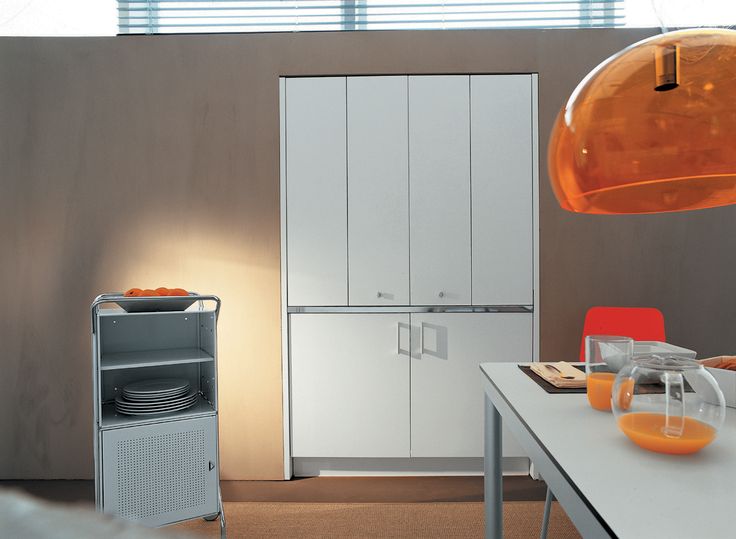
This version is more upscale than the mini-kitchen, as it comes with stylish cabinet enclosures and is larger. Designed for use in a studio apartment or as an office coffee and tea station, it is available in various finishes and appliances. Its worktop is made from stainless steel and the sink make be situated on the left or right hand side. It includes a compact microwave and refrigerator.
Prices start at £1695 exclusive of VAT.
The Circle Kitchen
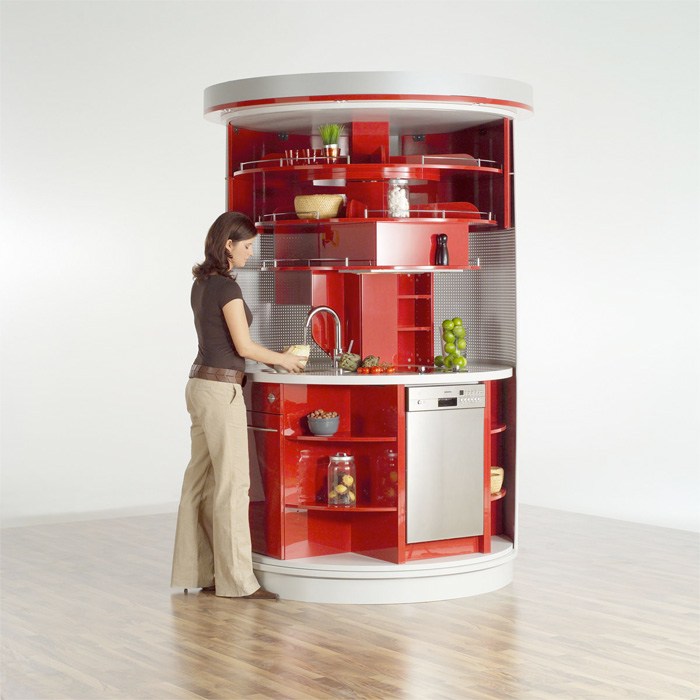
This is a revolving kitchen center with 180 degrees of functionality. It includes many desirable features, such as a refrigerator, oven and microwave, dishwasher, storage capacity the same as twelve cupboards, a sink with a waste bin and generous preparation area. All of this fits in a space under 1.8 square meters. It can be installed almost anywhere, using corners or other tight spaces.
YesterTec Design Company Mini-Kitchen Armoires
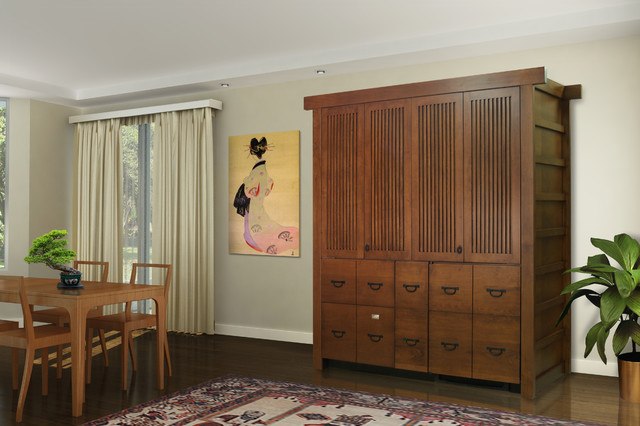
Though just a touch larger, but not by much, the elegant armoires of YesterTec provide everything that a kitchen has, but fitting inside beautifully crafted cabinetry. Use the space, clean up, and simply close the armoire until the next time.
Kitchoo K2 Kitchen
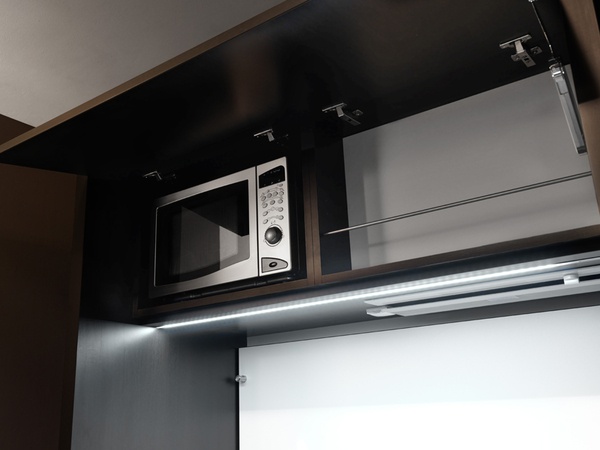
Granger Furniture has exclusive licensee rights to the Swiss Kitchoo K2 Kitchen. The team which builds Kitchoo has the goals of producing the best compact kitchens. The company has been producing thousands of kitchens since 1993. The company recently presented its products at Eurocucina in Milan in April 2016.
This micro-kitchen collection stands out from the norm because of the use of nature stone worktops, invisible and silent doors, induction cooktops, flush installed sinks, and LED lighting. It is possible to install a Kitchoo in almost any space.
Boffi Joe Colombo Micro-Kitchen Carts
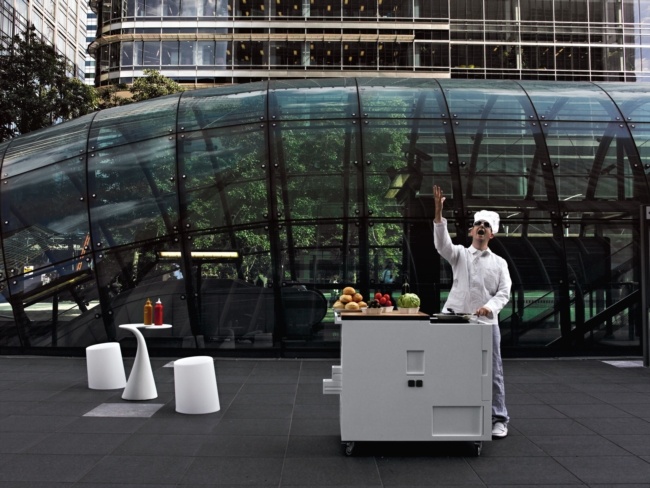
These upscale kitchen-in-a-cart constructions go pretty much anywhere. They are found in the tiniest living quarters and outdoor entertainment spaces.
Avanti Compact Kitchen

For the smallest spaces, Avanti makes several combination complete kitchens with refrigerators and electric heating units for cooking. There is a small sink and under countertop storage. The units are sturdy stainless steel and practical for the smallest apartments.
Summit All-in-One Kitchenette

Summit has several different kitchenette models which are made with refrigerators and freezers, a sink, electric heating units and storage space. These are often used as temporary kitchens, or in very small spaces.
Miniki Modular Wall Kitchens
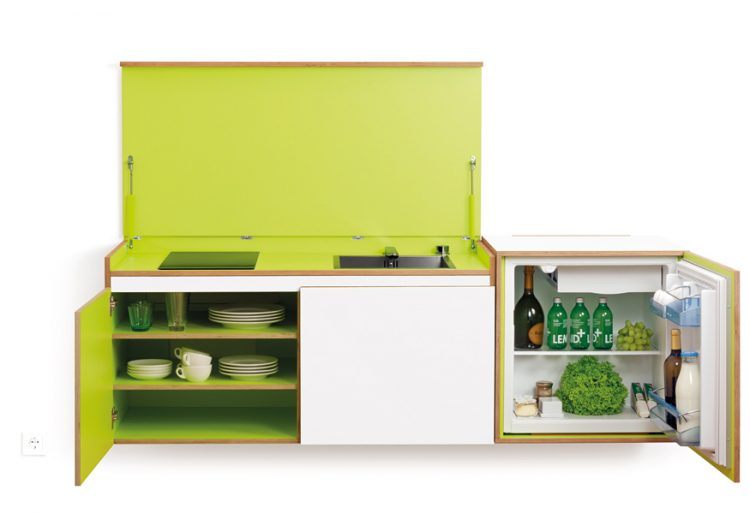
This company makes modular kitchen systems which are customizable in terms of how the modules are arranged, and they can be installed on the wall to save space. There are three modules made, and these can be mixed and matched as desired. They were created for use in apartments where the living area is part of the kitchen. The Miniki modular sideboards simply close up when they are not being used.


Comments
Loading…